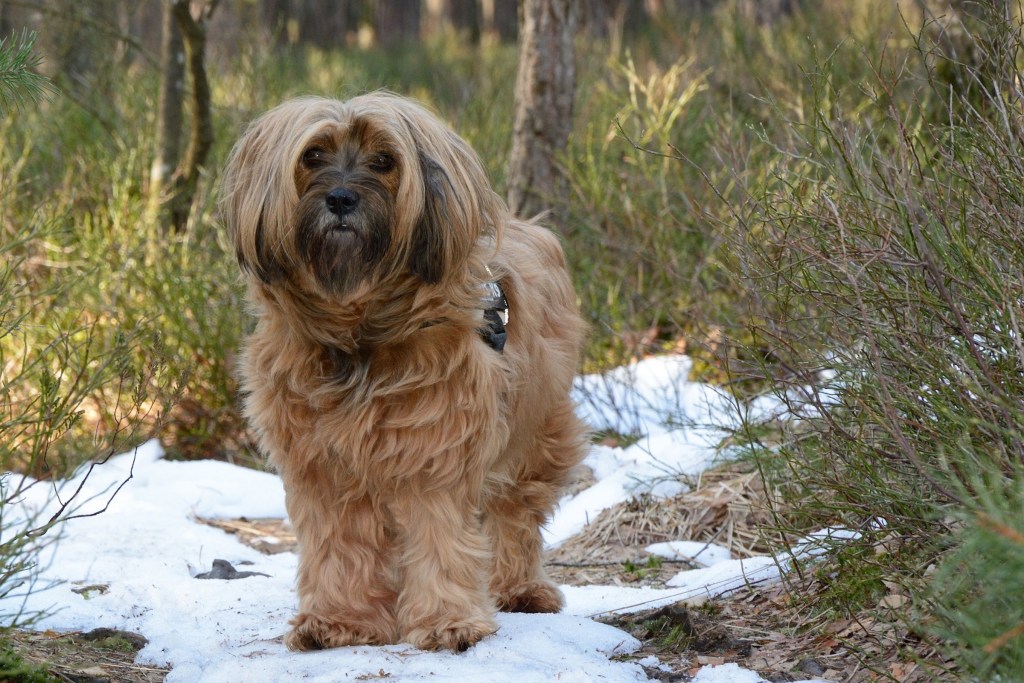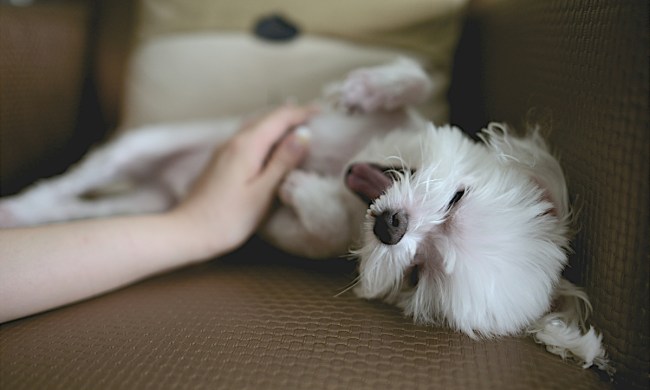Tibetan terriers are affectionate companion dogs that make loyal lifelong pets, but they’re not even in the top 100 most popular breeds in the U.S. The American Kennel Club (AKC) ranks them at number 106 out of 284, which proves there’s still a lot to learn about this “Holy” dog breed. In fact, even the name “Tibetan terrier” is slightly misleading. Did you know this breed isn’t a terrier breed at all?
It’s true! Despite having the terrier name, this breed is anything but. It’s a bit confusing — we know — so that’s why we want to break down a few basic facts about these versatile and very affectionate dogs. Consider this Tibetan terrier 101!
Tibetan terriers: All about this lovable, ancient breed
Though this breed’s history is just as fascinating as the dogs themselves, let’s get to know the basics about these pups first.
Tibetan terriers are on “the lower end of medium-sized breeds, standing about 15 inches at the shoulder and weighing between 20 and 24 pounds” (via AKC.) They’re larger than their cousins, the Lhasa apso, but they share a similar wooly looking coat that kept them warm in the mountains of Tibet.
Thanks to their snowy homeland, these faux terriers also developed webbed “snowshoe” paws to help them get around. It might sound like this feature hinders Tibetan terriers on non-snowy land, but the opposite is actually true. These large, flat feet were ideal for scaling steep mountains, explains the AKC, which is why these were probably used to retrieve items that had fallen down mountainsides.
The coat of the Tibetan terrier can come in over a dozen color patterns, with black or white markings or no markings. Their double-layered coat requires regular grooming, too. The AKC recommends choosing a puppy cut for this breed if the traditional long, flowing hairdo gets tangled due to outdoor activity. For less rambunctious pups, a full coat can be incredibly stylish — and it can offer daily opportunities to bond with your dog through brushing.
Personality-wise, you’re likely to find a vigilant yet affectionate companion in a Tibetan terrier. You’ll know when a stranger is approaching the front door, but you’ll always have a partner in crime for your outdoor adventures, too. At the end of the day, one of these dogs will be happy to rest by your side.
Tibetan terriers were ‘Holy Dogs’ and bred and raised in monasteries
Although these dogs have only been recognized as a breed for about 85 years, the Tibetan Terrier Club of America (TTCA) explains that they’ve been around for at least 2,000 years. These ancient pups were considered symbols of good luck, and they were raised by the Lamas — or monks — of Tibet’s “Lost Valley.” The pups watched over the temples, retrieved items from the steep mountainsides, and became beloved companions. In fact, the monks even called these dogs “little people,” and they treated their pets like valued family members. Modern pet parents can relate!
According to the TTCA, very little about this breed has changed since it was first recognized by England’s Kennel Club in 1937. At the time, Dr. Agnes R.H. Greig single-handedly brought these dogs to the world’s attention after she received a Tibetan terrier puppy as a gift while living in India. The dog was a present from a Tibetan woman after Dr. Greig saved her life, and it led to the recognition of the breed as a whole.
Why Tibetan terriers are not actually terriers
After Dr. Greig met her new companion, she requested to show her puppy at the Delhi Show in India. The judges agreed that they had never seen a dog of this kind before, so they “suggested that Dr. Greig try to obtain a mate for her from Tibet, and to continue the breeding, to see if the dog bred true” (via TTCA). Spoiler alert — the dogs did breed true!
After breeding three generations of these dogs, the India Kennel Club determined that the Tibetan terrier was in fact a true breed. They gave the breed the name “terrier” because these dogs were the same size as dog breeds the English considered terriers — not because they are true terriers.
The AKC defines terrier breeds as breeds “descended from dogs that were used to hunt vermin,” which this breed is not. Instead, Tibetan terriers are companion dogs from the non-sporting group. Truthfully — there is no relation between this breed and actual terriers! Even if Tibetan terriers did help guard monasteries and retrieve items from mountainous areas, there’s no evidence that these dogs ever hunted or chased vermin.
We hope the story of this breed’s name is a bit less of a mystery now that we’ve learned more about these dogs. Tibetan terriers are adorable, affectionate pups with a rich history that deserve to be known. Even if this breed isn’t all that popular in the U.S., these dogs play an important role in Tibet’s history and heritage. That alone is worth celebrating, don’t you think?
Whether you’re looking for a new best friend or are just learning more about dogs, we hope the Tibetan terrier’s story inspires you to learn more about other breeds, too. The canine world is a versatile one, and there’s oh-so-much to discover!






